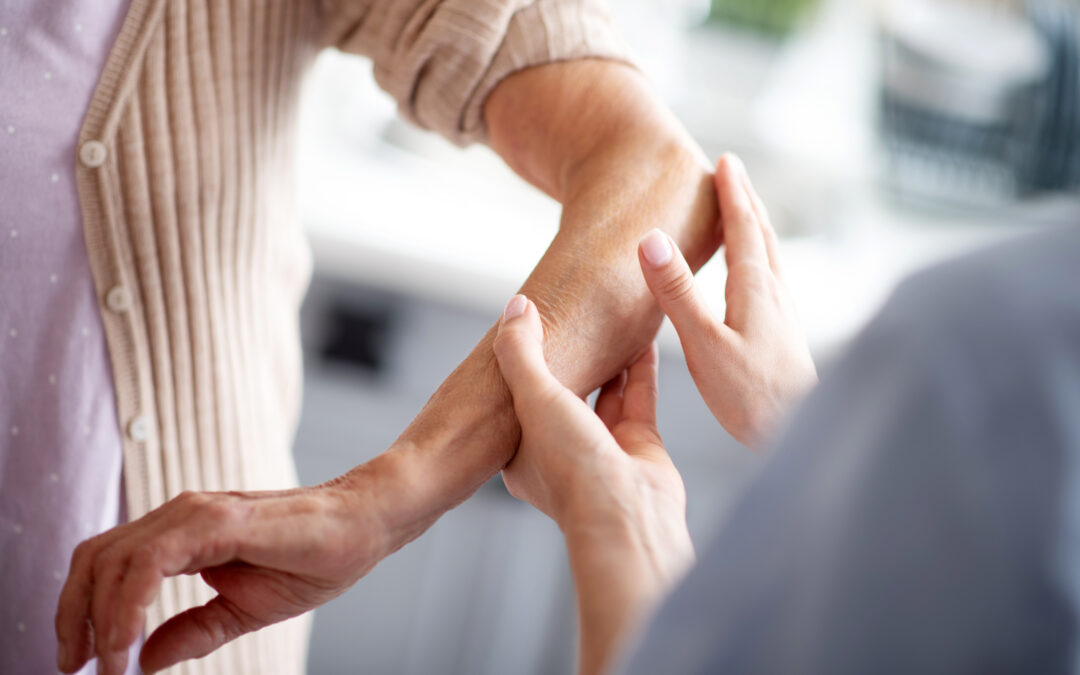Contents
Have you been experiencing radiating pain throughout your wrist, forearm and elbow? You might have a case of tennis elbow. Tennis elbow is estimated to affect between 1% and 3% of the adult population, and most people affected by tennis elbow don’t even play tennis! If you do have tennis elbow, you may be wondering what to do about it.
Luckily, most cases of tennis elbow can be treated through nonsurgical methods, such as physical therapy. While tennis elbow does not require physical therapy, your recovery can be greatly improved by working with a physical therapist.
What is tennis elbow?
Tennis elbow is a type of muscle strain injury. This painful condition occurs when the muscles in your elbow and forearm are overused, causing tiny tears in the tendons that attach your forearm muscles to bone in your elbow.
Due to its name, you may assume that only tennis players can get tennis elbow. However, there are other common arm motions that can cause tennis elbow, such as:
- Using plumbing tools.
- Painting.
- Driving screws.
- Cutting up cooking ingredients, especially meat.
- Repetitive computer mouse use.
Any movement involving repetitive motions of the wrist and forearm can lead to tennis elbow. As such, you are at greater risk of developing tennis elbow if you play any racket sports. Certain occupations, such as plumbers, painters, butchers and cooks, are also at a greater risk of developing tennis elbow.
What are the symptoms of tennis elbow?
Pain is the primary symptom of tennis elbow. Tennis elbow pain usually radiates from the outside of your elbow into your forearm and wrist. This pain may be mild at first but can gradually get worse.
If you have tennis elbow, you may also experience pain when you:
- Shake hands or grip an object.
- Use tools or open jars.
- Hold a coffee cup.
- Turn doorknobs.
How can physical therapy help treat tennis elbow?
In the majority of cases, tennis elbow can successfully be treated without surgery. One common nonsurgical treatment for tennis elbow is physical therapy.
A physical therapist will use a variety of techniques and modalities to treat the root cause of your condition, reduce symptoms and help prevent future injury. Physical therapy for tennis elbow may include one or more of the following treatment methods:
- Rest — Rest is often the first step in your recovery from tennis elbow. Your physical therapist may provide you with a brace or splint to help immobilize the area so that your muscles can properly rest.
- Ice — Cold therapy may also be a part of your tennis elbow physical therapy. Ice packs applied to the elbow can reduce blood flow to the area. This can significantly reduce inflammation, swelling and pain. Your physical therapist may use cold therapy during treatment sessions or suggest that you use ice packs at home to manage symptoms between visits. When using ice packs at home, be sure to apply the ice pack for no more than 20 minutes at a time.
- Ultrasound therapy — Your physical therapist may also use ultrasound therapy as part of your tennis elbow treatment. During ultrasound therapy, an ultrasound probe is placed over the affected area on your arm. This probe emits high-frequency waves into the tendons in your arm. This treatment method can help reduce inflammation and promote healing of damaged tissue.
- Therapeutic exercise — Tennis elbow physical therapy may also include a therapeutic exercise routine. Your physical therapist may create a custom exercise program for you to do at home between in-clinic sessions. For tennis elbow treatment, this routine would include stretching exercises to improve your range of motion. These exercises can also help you regain use of your affected arm. Your exercise program will also likely include strengthening exercises to help you recover muscle strength after resting your injured arm. Improving the strength of your injured tendons can also help prevent future injury.
- Joint mobilization — Joint mobilization is a type of manual therapy where your physical therapist will use their hands to apply targeted pressure to joints in specific directions. Your physical therapist might incorporate wrist joint mobilization as a part of your treatment. Wrist manipulation can help with a variety of tennis elbow symptoms, including pain.
- Myofascial release — Myofascial release therapy is a hands-on physical therapy technique used to help patients with pain management. The myofascial tissue is a connective tissue that covers and supports the muscles throughout your entire body, including your wrist, forearm and elbow. When you suffer from a physical condition such as tennis elbow, stiff areas called “trigger points” may develop in your myofascial tissue. Myofascial release therapy, or trigger point therapy, focuses on finding and manipulating these trigger points to release tension in your fascia and reduce your pain. Myofascial release therapy can also improve range of motion. As such, it has the potential to be a greatly beneficial part of your tennis elbow physical therapy.
Lattimore PT can help you recover from tennis elbow through physical therapy
Think your tennis elbow could benefit from physical therapy? Search no further than Lattimore Physical Therapy and Sports Rehabilitation. Our team of licensed health professionals are prepared to support you through your recovery from tennis elbow.
At Lattimore PT, we are dedicated to improving your quality of life and treating your injury with the whole person in mind. During your initial evaluation, we’ll take the time to understand your specific needs, injury and rehabilitation goals. Then, we will create a treatment plan custom to your symptoms. Our prompt, personalized care will help you jump-start your healing journey.
Contact our team today to take the first step toward recovery from tennis elbow.



